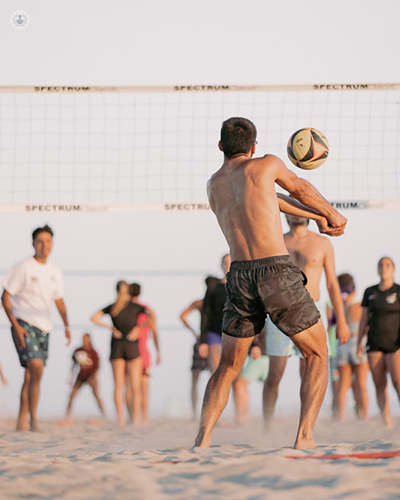An expert insight into sports related knee injuries
Autore:Sustaining damage to the knee is, unfortunately, a relatively common occurrence in many types of sports. In this detailed guide, renowned consultant orthopaedic surgeon Mr Koushik Ghosh, who specialises in sports related knee injuries, explains how knee complaints are diagnosed and treated. The highly esteemed specialist also explains why surgery is deemed necessary for some types of knee injury and why they often occur.

What common knee injuries require surgery?
Most common knee injuries such as a sprained medial collateral ligament (MCL) or a minor degenerative meniscal tear can be resolved without surgery. Essentially, these types of injuries can be managed successfully with bracing or physiotherapy in the first instance.
However, other common injuries such as an anterior cruciate ligament (ACL) rupture, recurrent patella dislocations or a large meniscal tear causing persistent mechanical symptoms or locking may necessitate surgery. We are moving into an unprecedented era of knee preservation, however, every decision on treatment should be tailored to the patient’s individual needs.
Are sports related injuries more likely to require surgery?
By definition sports related injuries occur in individuals who are generally more active and are keen to maintain a healthy lifestyle that allows them to compete. This is the case whether they are an elite level athlete or a parent who wishes to keep up with active young children.
The restoration of normal anatomy - whether it be an intact, anatomically located ACL or fully functioning meniscus will certainly be beneficial but again, a carefully taken history and thorough examination is always the most accurate means of determining the requirement for surgery.
How are knee injuries diagnosed and treated?
Knee injuries are diagnosed with a thorough history and examination. Basic investigations such as X-rays and potentially an MRI scan are there to confirm the diagnosis and plan any future surgical intervention.
Treatment can be broadly divided into two categories; non-operative and operative. Non-operative, or conservative measures include things such as bracing, physiotherapy, basic pain killers and sometimes injections. Operative interventions vary according to the patient’s specific injuries but nowadays most interventions can be performed as a day case procedure via keyhole or arthroscopic surgery.
Are athletes at a higher risk of developing long-term knee issues that may need surgery?
Repetitive loading and stressing of tissues undoubtedly can predispose someone to injury that requires surgery. These risks can often be minimised with good conditioning, proper warm-ups, good technique and a healthy dose of good luck!
What sports should be avoided following knee surgery?
A general rule following an ACL reconstruction for example, would be no cutting or pivoting sports for a year after the surgery. However, after this time and with the correct rehabilitation there should be no limitations to high intensity competitive sports.
Mr Ghosh is a leading specialist in sports related knee injuries. If you are seeking treatment for a knee injury and wish to discuss your options further with Mr Ghosh, you can book a consultation with him by visiting his Top Doctors profile.


